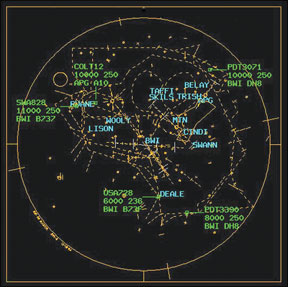I am reading the August issue (yes, I know Im behind…) and noted the article,
However, on the opposing page (page 15), the last bullet in the “Takeaways” sidebar specifically states, “To prevent backfires-and possible exhaust system

247
damage-never turn the mag switch back to Both after its been turned to Off.”
Which is it?
As a member of a club flying Piper Archers and Arrows, plus a few Bonanzas, wed like to understand more about this issue and the background behind the actual recommended procedures. Many thanks!
David Kohl
Via e-mail
Good catch. What we obviously did not adequately explain is the power setting being used when considering both pieces of advice.
In the first sidebar, we did mention the engine should be idling when doing a mag-switch check. In the second instance, we were considering a higher power setting, either during the pre-flight runup or while in flight. In those instances, you dont want to immediately go back to the “Both” position.
During the runup, if the mag switch is inadvertently switched “Off,” we would opt to leave it there, pull the mixture to idle cutoff and let the engine come to a stop. Wed then power down the entire airplane and go through the normal starting procedure checklist.
In flight, wed also pull the mixture to idle cutoff. As the engine spools down, pull the throttle to idle. Then-and only then-switch the mags back to “Both.” Feed in the mixture to where it was before this little episode began and the engine will start running again. Gently add throttle back to the previous power setting and youre done.
In both scenarios, the idea is to prevent a backfire from accumulated, unburned fuel in the exhaust system.
Crossing Tracks
Good article on the handheld Garmins (
Handheld Six-Pack? November)! But, I noted
288
an error on page 7 (as probably have dozens of other readers by now). In the sidebar about the virtual HSI (“Dissecting Garmins Virtual Panel” sidebar), the text confuses the displayed track and desired track.
In the example shown, 145 degrees is at the top of the HSI and is actual track. The airplane is on a track to intercept the desired track of 166 degrees at an approximate 20 degree angle.
Jim Piper
Palos Verdes, Calif.
We are sooooo busted.
Clearance Confusion
I have two questions about your October 2007 issue. In the article,
Flying in the Margins, a sidebar on SVFR states: “In Class G airspace…youll need an IFR clearance.”I believe you dont need an IFR clearance to operate in Class G, which is uncontrolled airspace. Why anyone would want to fly in IMC in Class G without a clearance, I dont know. But it does not appear one is required.
Second,
Someone To Watch Over You states, “Thats different from IFR pilots, who are expected to fly at filed or cleared altitudes, and descend to published altitudes when cleared onto arrival and approach procedures without being told.”Though an approach clearance does allow descent to charted altitudes, an arrival clearance does not imply a descent clearance. Thus, IFR pilots are not expected to descend to an arrivals published altitudes without being told.”
Jay Yeager
Via e-mail
Busted again, by another sharp-eyed reader. Yes, since Class G airspace is uncontrolled, no clearance is required to fly in IMC. Regarding arrivals, your statement is mostly true. The exception involves appropriately equipped aircraft-mostly airlines-using an FMS-based arrival where a single clearance to comply with the published crossing altitudes can suffice.




